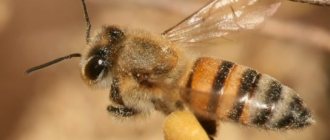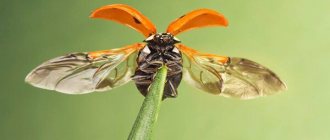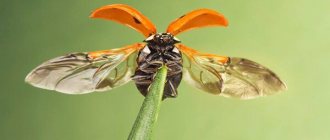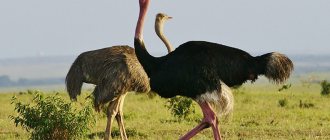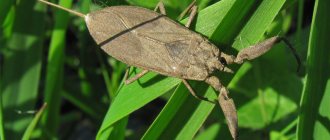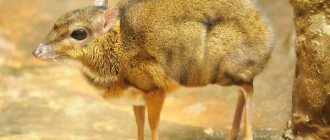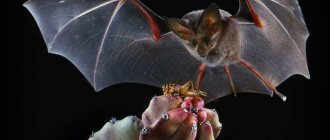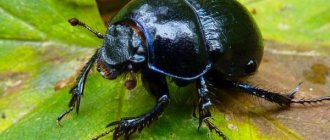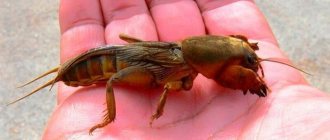An inquisitive schoolchild who pays attention to biology will probably tell a lot about these creatures without much difficulty. But the knowledge of many adults is limited only to scant information that scorpions live in the desert, have a deadly sting on their tail and are good at hunting. Of course, much of the knowledge acquired at school is forgotten over time, but those who do not want to be considered ignorant strive to learn something new, useful and exciting all their lives.
If you are interested in wildlife and the life of the inhabitants of our planet, the article will certainly be useful to you. In it we will try to answer a number of questions in detail. So, is a scorpion an animal or an insect? What class do these creatures belong to? How do they live in their natural environment, and is it possible to breed these formidable predators at home? Let's look into everything in detail.
Common Misconception
Many people are convinced that any crawling creature with many legs and antennae is an insect. By this logic, Scorpio is also considered as such. Such statements are completely false!
Even the very question of whether a scorpion is an animal or an insect sounds strange to anyone who is passionate about biology. The fact is that insects belong to the Animal Kingdom, so if we are talking about a bug, both statements are true. But in the case of Scorpio, it is impossible to say so without violating the truth.
By the way, Scorpio is far from alone. Many of its relatives are also mistakenly classified as insects.
A predator with a “peaceful” character
The animal is hardy, easily tolerates sweltering heat and cold, and is immune to radiation. If it’s hot outside, the scorpion burrows into the ground, hides among the stones, or straightens its legs and freezes in a stance so as not to come into contact with the hot ground and allow air to blow on the body from all sides.
Poisonous arthropods are peaceful towards people and attack in exceptional cases. During the day they hide in shelters, and at night they go out hunting.
Attacks are especially dangerous in tropical countries. An inflamed wound forms at the site of the bite, and in children the poison can be fatal. Every year, almost a thousand children, mostly Indian and North African, die for this reason.
Reasons for confusion
Why do such misconceptions arise? Let's highlight a few reasons:
- All insects are animals.
- Scorpions are comparable to insects, have a similar external structure and color.
- Many types of insects live near scorpions.
- Similar diet.
- Belonging to the phylum of arthropods.
This is why many find it difficult to answer the question of whether a scorpion is an insect or an animal. At first glance, there are indeed many similarities. But once you dig deeper, you will discover a huge number of differences.
Scorpio's Place in the Animal Kingdom
Let's turn to the official classification to determine whether a scorpion is an animal or an insect.
What class these creatures belong to is the most important question. We already know that scorpions belong to the Animal Kingdom and the phylum of arthropods. Scientists classify them as a subphylum of chelicerates, a class of arachnids and the order of scorpions. Currently, the detachment includes about twenty families. Some of them are very numerous, may include up to 200 species. Some are represented by only one or two species.
Scorpios are one of the oldest inhabitants of our planet. The direct ancestors of these creatures are crayfish - the largest arthropods that have ever lived on Earth (up to two meters in length).
Racoscorpions (class Merostomidae), by the way, are also not insects. For modern scientists, scorpions are a very important subject of research. They help trace the transition from underwater to terrestrial lifestyles.
Uroplectes lineatus
The habitat of the small fat-tailed scorpion is the desert expanses of the southeastern tip of Africa. This type of scorpion makes the first threatening and striking impression with its unusual color.
Its back, claws and the tip of its tail are black, but its limbs and part of its tail are red. The bite of such a “handsome one” is quite painful and causes discomfort.
In people with weakened immune systems, a bite can cause fever and prolonged allergic reactions.
8
Main differences from insects
As you know, insects have 3 pairs of legs. All chelicerates have 4 pairs of walking legs, so you can distinguish representatives from each other even with the naked eye. There are no insects with more than six legs.
Another difference is the presence of chelicerae, which give this subtype its name. This word refers to oral appendages designed to capture food.
But the claws, which in scientific language are called pedipalps, deserve the most attention. Something similar exists in cancer, which is also an arthropod and is related to the scorpion. But none of the insects have.
Count the limbs and everything will become clear. It is not so difficult to find the answer to the question of whether a scorpion is an animal or an insect.
The photo shows the structure of a scorpion. You can see:
- head with eyes and chelicerae;
- 4 pairs of walking limbs and a pair of pedipalps attached to the cephalothorax segments;
- segmented abdomen;
- telson (anal part), above which the poison gland is located.
Methods of disposal
A false scorpion without a tail is beneficial when located in a living space, but the accumulation of its waste products can also cause an allergic reaction. You need to get rid of beetles, and along with them, dust, unnecessary paper, and harmful insects.
There is no need to use chemicals. Females do not lay eggs in secluded places; they drag the larvae with them. You need to carry out search work, find a cluster of beetles, collect them carefully in a jar or box, take them out into the forest, to the shore of a reservoir, or simply throw them on the grass near the house.
To carry out general cleaning of the apartment:
- vacuum;
- wash the floors with soapy water;
- wipe the shelves;
- remove trash, paper deposits;
- review all the books, shake off the dust;
- remove all unnecessary things from the room;
- ventilate well.
To prevent the appearance of false scorpions in the house, you need to maintain cleanliness, avoid clutter and large accumulations of paper. The presence of small bugs in the house indicates a high number of dust mites, which are much more dangerous to humans than false scorpions.
Close relatives
Let's talk to those whose gender affiliation also causes confusion. First of all, these are spiders and ticks. It is worth remembering that they also belong to the phylum arthropods and the class of arachnids.
It is appropriate to mention some more unusual creatures that are mistakenly classified as scorpions.
The order received its name due to its pedipalps ending in claws. As we can see from the photo, they do not have a tail with a poisonous sting. In fact, these creatures are spiders. False scorpions, like ordinary scorpions, are animals, not insects. They are very common on the planet, but they lead a secretive lifestyle and have modest sizes (up to 1.2 cm), so many people do not even know about their existence. But if you happen to pay attention to such a baby, you will know that this is not a desert cub, but an adult creature. It cannot sting and does not pose any danger.
Reproduction and lifespan
The mating ritual includes mating and a mating dance. The male holds the female with his forelimbs and begins to lead her along. This joint movement can continue for hours.
During this strange round dance, the male releases a capsule with seminal fluid (spermatophore). The female, following the male, comes into contact with the spermatophore. It enters the female's genitals, located in the lower abdomen. Fertilization occurs.
Female scorpion with offspring
The end of the mating dance coincides with the end of the fertilization process. At this moment, it is important for the male to quickly leave, otherwise he will be eaten. The female's pregnancy lasts a long time: from several months to one and a half years. As a result, from 20 to 30 or more cubs are born. The newborns are born one by one and are placed on the mother's back.
The scorpion is an invertebrate animal , but it has an exoskeleton in the form of a shell. In newly born arthropods it is soft. After a few hours the shell hardens. Young scorpions leave their mother's back and begin to lead an independent life. The first threat that they encounter in their life is their own mother. She can eat her offspring.
One of the important stages in the life of a Scorpio is molting. The age of young arthropods is measured by the number of molts. In order to become adults, young scorpions need to survive 5-7 molts.
The exoskeleton splits, the scorpion crawls out of the old shell, remaining soft and defenseless until the new armor completely hardens. Scorpions live long. From 2 to 10 years. Under favorable conditions, this life threshold can be exceeded.
Squad description
These predators are most active at night. They have phenomenal vision, thanks to multiple pairs of eyes. Scorpio has a 360 degree viewing angle.
Another unique sense organ helps to survive and eat on time. Scorpions pick up air vibrations created by the wings of a moth and feel the vibrations of the sand along which the beetle runs. The hairs that cover their body do not serve for beauty at all, and certainly not for warmth - these are peculiar antennas.
Not a single Scorpio will start a fight for the sake of a fight. By themselves they are not aggressive. Few people know, but even a predator inferior in size can defeat this rather large creature. For example, a scorpion will most likely lose a fight with a praying mantis or a stag beetle.
Danger to humans
Most scorpions are not dangerous to people, for the simple reason that they do not consider anyone larger than themselves as food. These creatures can only sting in self-defense. Therefore, everyone who goes to Asia and Africa should carefully inspect their shoes, bags, and pockets, so as not to inadvertently scare the creature lurking there.
The relevant question is how dangerous a person is to a Scorpio. Many species of these arthropods are listed in the Red Book. Volunteers and environmentalists around the world call for careful treatment of all living things, reminding that it is impossible to kill for fun or because of unfounded fears of these unusual, beautiful and harmless animals.
Keeping scorpions in captivity
Maybe you have thought about such a pet? Is this why you are wondering what a scorpion is - is it an animal or an insect?
The description of these creatures has long allowed many breeders to decide to place a scorpion in their homes. Many species are perfect for keeping in a terrarium. Such an amazing pet will certainly impress friends and glorify the owner as an extraordinary and courageous person.
Scorpions should not be overfed; they need food no more than once every 3 days. The diet should be similar to what scorpions have in nature. The menu should include insects, spiders, worms, and larvae. Large species are also suitable for feeding rodents. Free access to the drinking bowl and moistening from a spray bottle are required. Scorpios are not very sociable, but they get used to a good-natured and attentive owner quite quickly.
Nutrition
Scorpions never eat dead food, only live food. They do not go overboard with their food; they can feast on spiders, centipedes, various larvae, and small lizards. If nothing edible comes across, they can easily withstand hunger for a week or two. In general, scorpions are able to go without food for more than a month - very few insects have this ability.
Scorpions are not very active when hunting. Usually their prey is a cockroach or woodlice that accidentally stumbled upon the hunter. The scorpion with a sharp movement grabs the victim with its claws and tears it into pieces. And after that it begins to suck out the contents.
This process takes quite a long time. This type of nutrition allows the hunter to go without food for a long time. And the liquid sucked from the prey compensates for the lack of water.
Cannibalism among these insects is not uncommon. When there is no food for a long time, they attack each other. Females very often eat their suitors after the mating process. And thanks to such actions, the female has enough strength to bear eggs and give birth to strong offspring.
